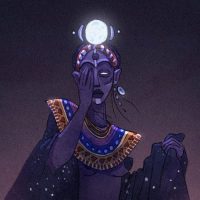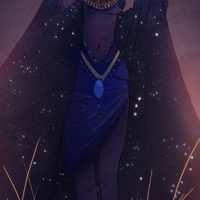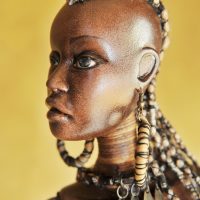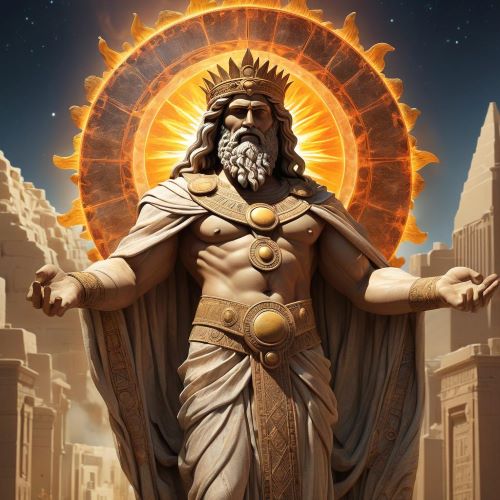Nergal : God of the Underworld
Listen
At a glance
| Description | |
|---|---|
| Origin | Sumerian Mythology |
| Classification | Gods |
| Family Members | Ereshkigal (Wife) |
| Region | Iraq |
| Associated With | Underworld, Death |
Nergal
Introduction
In Mesopotamian mythology, Nergal emerges as a deity of remarkable complexity and power, revered as the formidable god of the underworld and war. Also known as Erra and Nirgal, Nergal holds prominence across ancient Sumerian, Babylonian, and Assyrian beliefs, embodying aspects of pestilence, war, and the underworld. With roots tracing back to the earliest civilizations of Mesopotamia, Nergal commands reverence and fear as a potent force in the divine pantheon.
Physical Traits
Nergal’s depictions vary across Mesopotamian cultures and eras. Typically, he appears as a powerful and fierce deity, often sporting a stern expression and sometimes portrayed with a lion’s head, symbolizing his connection to war and destruction. Frequently depicted wielding weapons like a mace or sword, these illustrations underscore his warrior-like persona. Despite these variations, common traits persist: Nergal is consistently portrayed as a formidable figure adorned in armor, exuding strength and determination, embodying both the martial prowess of a warrior and the solemn authority of an underworld deity.
Family
Nergal’s family lineage is complex, intertwined with other Mesopotamian deities. He is primarily associated with two prominent families. Descended from Enlil and Ninlil, Nergal is considered the son of Enlil, the chief god, and Ninlil, the goddess of air and fertility. Among his siblings in this family are Ninurta, the god of war and agriculture, and Inanna, the goddess of love, war, and fertility.
Alternatively, some sources depict Nergal as the son of Enshar, the sky god, and Ninmah, the goddess of creation and childbirth. This lineage places him among the younger generation of gods, alongside deities like Ninisinna, the goddess of healing, and Namtar, the god of fate. Nergal’s wife is often identified as Ereshkigal, the goddess of the underworld. Their union symbolizes the merging of the realms of the living and the dead, highlighting Nergal’s dominion over both spheres.
Other names
Nergal, the formidable deity of the underworld and war in Sumerian mythology, is recognized by various names and titles, each reflecting different facets of his character and domains of influence. Referred to as the “Raging King,” the “Furious One,” and the “Destroyer,” Nergal embodies power and chaos. In Babylonian mythology, he is known as Erra, symbolizing destruction and warfare, underscoring his role as a deity of conflict and upheaval. Additionally, he is hailed as the “Lord of the Great Below,” signifying his authority over the realm of the dead. These epithets highlight Nergal’s multifaceted nature, depicting him as a warrior, ruler, and keeper of the underworld.
Powers and Abilities
Nergal, revered as a god of the underworld, holds dominion over death and departed spirits. Simultaneously, he embodies the essence of war and destruction, wielding formidable power on the battlefield. Often beseeched for protection against foes, he instills fear due to his ferocious and ruinous nature. Nergal’s diverse range of abilities reflects his multifaceted persona:
As the ruler of the underworld, Nergal governs the realm of the deceased, overseeing souls and upholding order in the afterlife. In matters of conflict, he emerges as a fearsome warrior, leading armies and associated with plagues and diseases, capable of unleashing devastating afflictions upon humanity. Referred to as the “lord of the burning furnace,” Nergal symbolizes the scorching heat of the underworld and its fiery depths. Some tales also attribute to Nergal the power of shapeshifting, enabling him to assume various forms, such as a lion or a dragon, thereby enhancing his strength and mystery.
Modern Day Influence
Nergal’s influence spans across modern culture, particularly within realms of fantasy and fiction where his name and attributes often signify characters associated with themes of death, war, or destruction. Despite the passage of millennia, Nergal’s legacy endures as a potent symbol of power and fear. In literature and art, from ancient epics like the Epic of Gilgamesh to contemporary fantasy novels and video games, Nergal’s image continues to inspire artists and storytellers, captivating audiences with his multifaceted nature and commanding presence.
Astronomically, the planet Mars was once linked with Nergal due to its fiery red appearance, reminiscent of destruction. This connection extends to the naming of celestial features, such as the Martian moons Phobos and Deimos, named after Nergal’s attendants in Greek mythology. Archaeological studies delving into Mesopotamian mythology and religion shed light on Nergal’s significance, providing insights into ancient beliefs and practices. As a prominent deity, Nergal plays a crucial role in understanding the cultural and religious landscape of ancient Mesopotamia, leaving a lasting impact on human history.
Overall, Nergal’s legacy remains vibrant in modern society, enriching literature, art, and scientific discourse. His enduring presence underscores the timeless fascination with ancient myths and the profound influence they continue to exert on contemporary culture and understanding of the human condition.
Related Images
Frequently Asked Questions
What is lorem Ipsum?
I am text block. Click edit button to change this text. Lorem ipsum dolor sit amet, consectetur adipiscing elit. Ut elit tellus, luctus nec ullamcorper mattis, pulvinar dapibus leo.
What is lorem Ipsum?
I am text block. Click edit button to change this text. Lorem ipsum dolor sit amet, consectetur adipiscing elit. Ut elit tellus, luctus nec ullamcorper mattis, pulvinar dapibus leo.
What is lorem Ipsum?
I am text block. Click edit button to change this text. Lorem ipsum dolor sit amet, consectetur adipiscing elit. Ut elit tellus, luctus nec ullamcorper mattis, pulvinar dapibus leo.
What is lorem Ipsum?
I am text block. Click edit button to change this text. Lorem ipsum dolor sit amet, consectetur adipiscing elit. Ut elit tellus, luctus nec ullamcorper mattis, pulvinar dapibus leo.
What is lorem Ipsum?
I am text block. Click edit button to change this text. Lorem ipsum dolor sit amet, consectetur adipiscing elit. Ut elit tellus, luctus nec ullamcorper mattis, pulvinar dapibus leo.







